7 Best LPVO Scopes: The Most Versatile Scopes!
The optics world is absolutely on fire with LPVOs. Low Power Variable Optics has taken over and become the go-to option for intermediate and full-powered semi-auto rifles. Sure, they work elsewhere, but most folks are tossing them on AKs, ARs, AR-10s, and similar rifles. There have never been more of the famed ‘short do’ optics, and they are only getting more popular. At the same time, it seems like they get a little better every year as well. How do you find the very best LPVO on the market? Well, you started at the right place. We are bringing seven high-quality LPVOs to the forefront to highlight the very best LPVO scopes on the market.
What’s an LPVO
A low-power variable optic is a magnified optic that starts at 1X or maybe 1.5X and can be increased anywhere from 4X to 12X across the mass market. LPVOs offer you a versatile optical option for the modern rifle. It’s designed to try to give you the best compromise between speed and precision at various ranges.
The LPVO has slowly crept its way into the military, starting with SOCOM and becoming the standard for every grunt in the field. They’ve found acceptance in law enforcement and beyond. As of 2023, LPVOs come in an absolute truckload of configurations and at varying price points. From several thousand dollars to less than a hundred dollars.
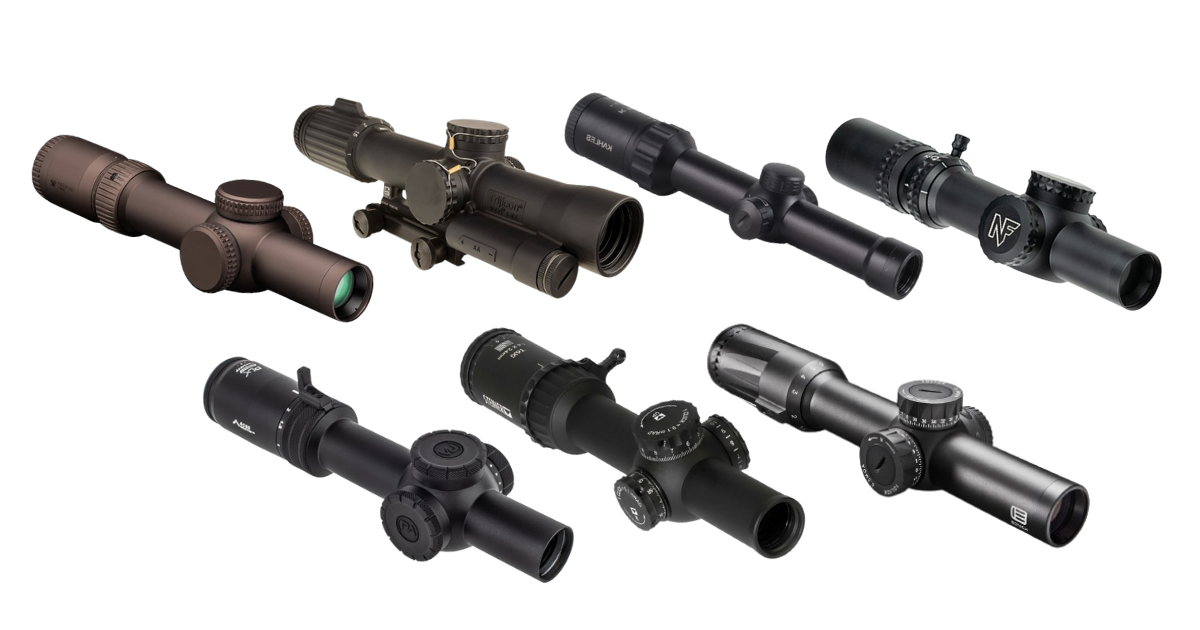
How We Chose the Best LPVO Scopes
Choosing the best LPVO scopes takes a lot of time. We have spent hours at trade shows, talking to manufacturers about their scopes, shooting many rounds on the range testing optics, and spending time with other shooting enthusiasts discussing what they prefer in optics.
As the popularity of the LPVO grows, so does the number of optics to review and test out. While this review includes our personal experience with these optics, it also includes the experience of military and law enforcement who have used them for duty. You will see that several of these optics have been chosen by different militaries, and for good reason.
This list is the top tier in the LPVO world, so don’t expect these optics to be budget friendly. But you get what you pay for, and in optics that is definitely true. If you want tough, dependable optics that also have clear images and useful reticles for both close and long range engagements, this list of the best LPVO scopes is for you.
Gun University’s Choices of the Best LPVO Scopes
Best LPVOs
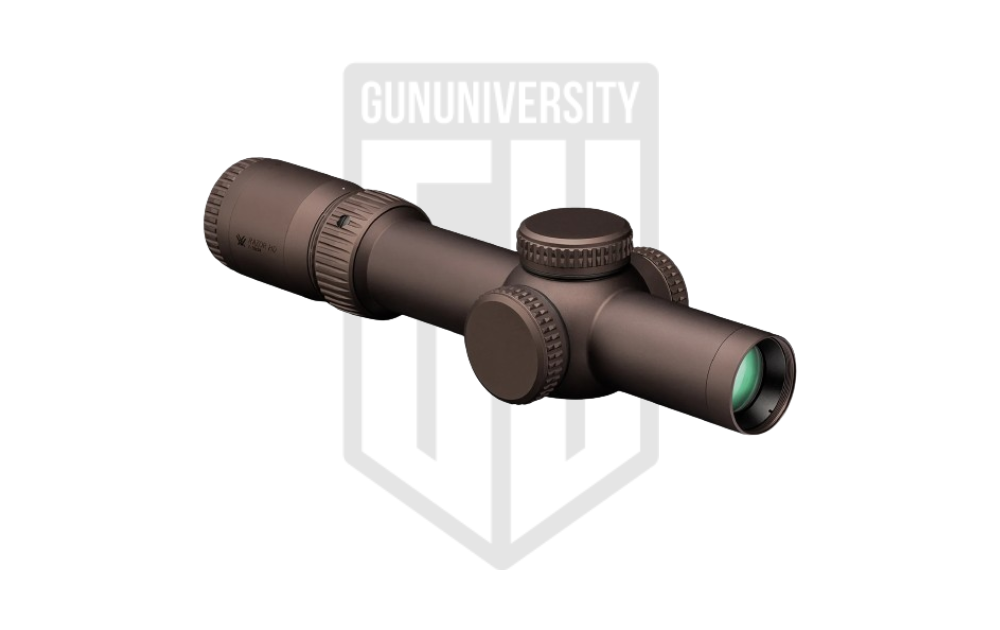 |
| Buy on Amazon | |
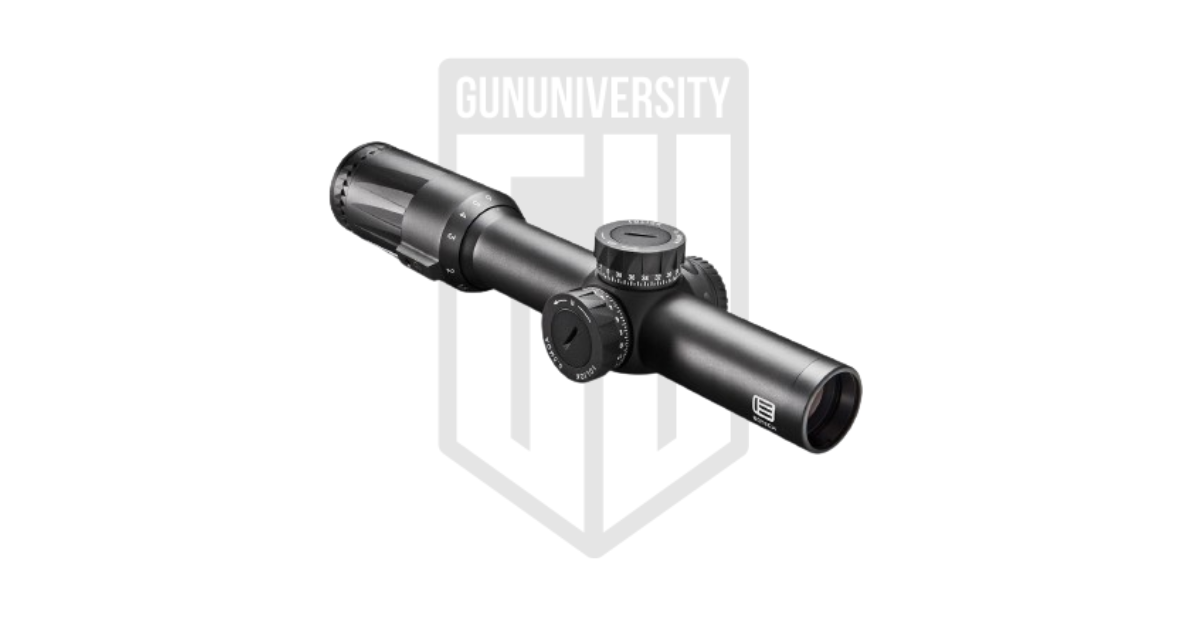 |
| Buy on Amazon | |
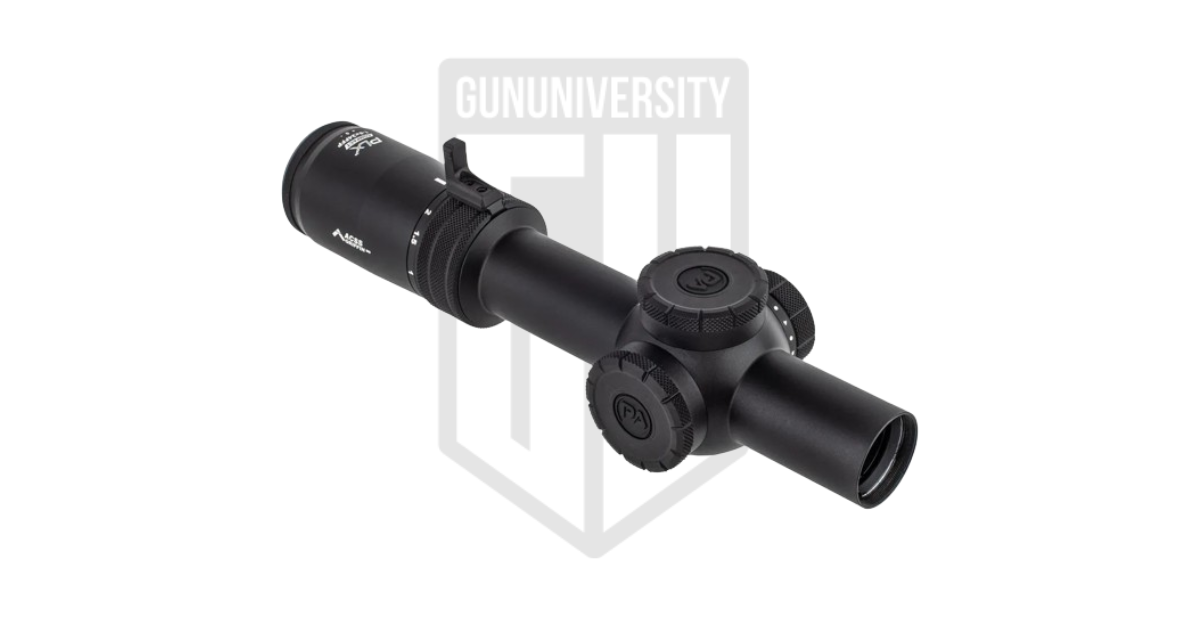 |
| Buy on Amazon | |
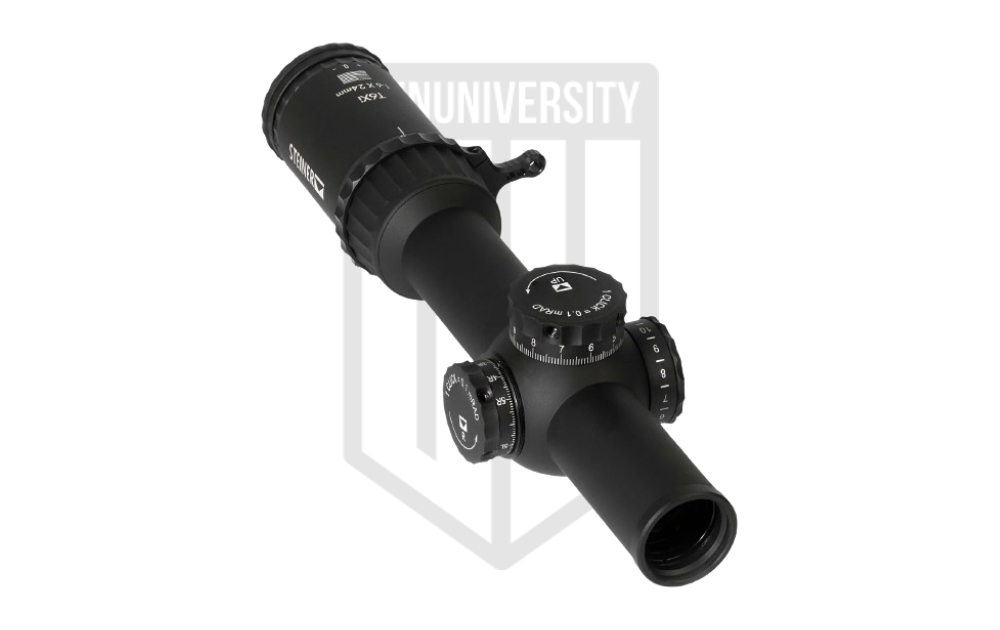 |
| Check Price | |
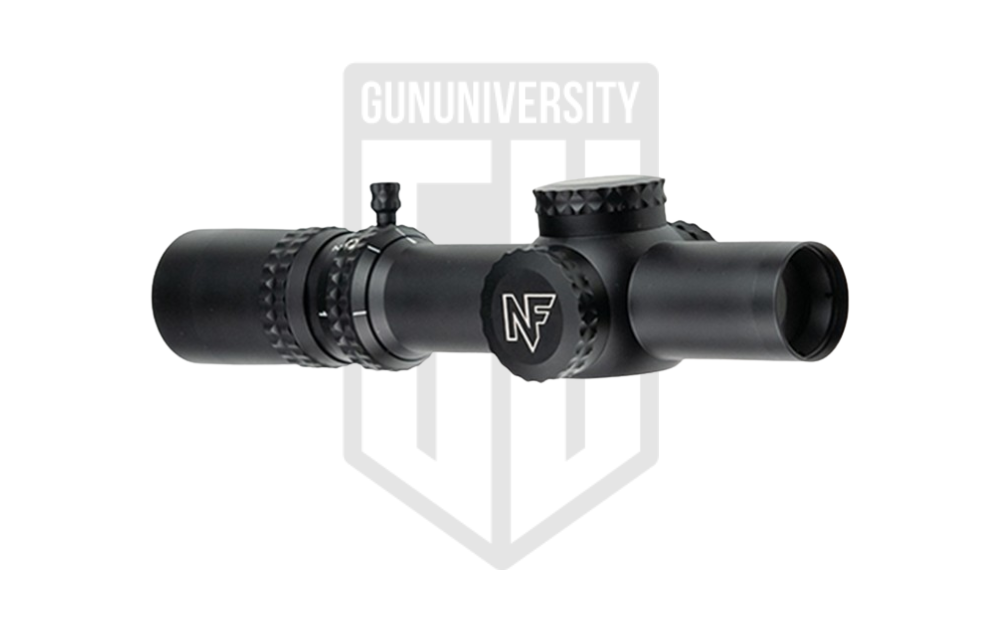 |
| Buy on Amazon | |
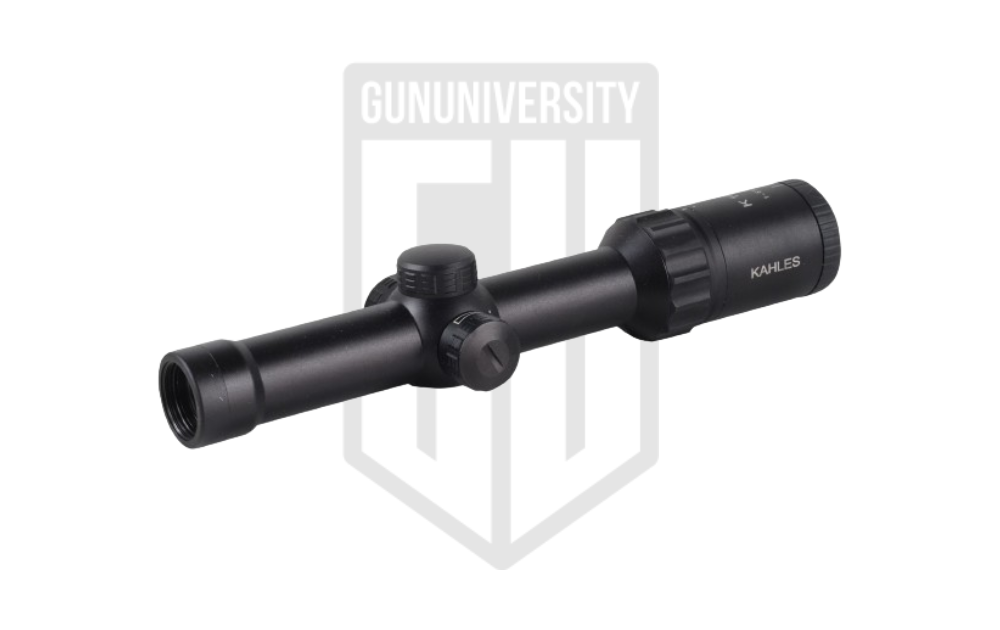 |
| Buy on Amazon | |
| Buy on Amazon |
Spec Comparison of the Best LPVO Scopes
Below is a table of the specifications for the best Low Power Variable Optics.
| LPVO | Magnification Range | Objective Lens Diameter (mm) | Tube Diameter (mm) | Weight (oz) |
|---|---|---|---|---|
| 1-10x | 24 | 34 | 21.5 | |
| 1-6x | 24 | 30 | 20.1 | |
| 1-8x | 24 | 30 | 16.95 | |
| 1-6x | 24 | 30 | 20 | |
| 1-8x | 24 | 34 | 21 | |
| 1-6x | 24 | 30 | 16.9 | |
| 1-8x | 28 | N/A | 31.5 |
Best LPVO Scopes
Here is our list for the best LPVOs:
- Vortex Razor HD GEN 3 1-10X
- Eotech Vudu 1-6x
- Primary Arms PA PLX-C 1-8X
- Steiner T6Xi 1-6X
- Nightforce ATACR 1-8X
- Kahles K16i 1-6X
- Trijicon VCOG 1-8X
Best LPVO Scopes – Reviews
1 Vortex Razor HD Gen 3 1-10X24
- Clarity A+
- Shootability A+
- Reliability A+
- Features A+
Our Grade
A+
Reader’s Grade
TBD
Based on 0 Reviews
Your Grade
Do You Own This Accessory? Leave A Review
Success Your Grade Has Been
Added To Our Reader’s Score
We use email to verify the accuracy of our reviews. We promise to never spam you.
Vortex Razor HD GEN 3 1-10X Specs
- Magnification Range 1-10x
- Objective Lens Diameter 24mm
- Tube Diameter 34mm
- Weight 21.5 oz
Vortex Razor HD GEN 3 1-10X Review
The Vortex Razor HD GEN 3 might be a pain to say and to type, but it’s a helluva nice optic. If I wanted to build a rifle that was more or less being used as a designated marksman rifle but also wanted some close-range capability, the Razor 1-10X would be the way to go. The 10X magnification level is a lot of magnification, and Vortex was the first to really pull off a high-quality 1-10X LPVO.
There is a lot to be impressed by with the Razor Gen 3, but what really blew my mind was the size and weight. It’s the same weight as the Razor Gen 3 1-6X, and it’s basically the same package overall. How they did that is beyond me, and the Razor Gen 3 really excels at packing a punch in a small size.
To make the most of that 10X magnification, Vortex includes the EBR-9 in MOA and MRAD options. This reticle includes a Christmas tree-looking reticle with a bright red dot in the center. When the magnification is at 1X, the dot makes up most of your view, but as you zoom in, the rest of the reticle becomes more visible and useful.
The view through the optic is remarkably clear throughout the entire magnification range. It really lets you zoom in and pick up targets, but like any good LPVO, you can hit the throw lever and swap to close quarter’s use in a flash. Of course, switching from 10X to 1X takes quite the throw of the magnification ring, but you’ll get used to it. A scope like this could be well suited on such a wide variety of rifles, but it seems most at home on a full power, semi-auto .308 or 6.5 Creedmoor.
Throughout this best of article we’ll be including scope reviews from C_DOES Youtube channel. He does a great job showing you how the scope looks, which is hard to do in text form like in this article.
You can check out our full length review on the Vortex Razor HD 1-10x here.
Vortex Razor HD GEN 3 1-10X Pros and Cons
- Lightweight
- Great glass
- Excellent long range reticle
- Up close, the reticle is average
2 Eotech Vudu 1-6x
- Clarity A
- Shootability A
- Reliability A-
- Features A
Our Grade
A
Reader’s Grade
TBD
Based on 0 Reviews
Your Grade
Do You Own This Accessory? Leave A Review
Success Your Grade Has Been
Added To Our Reader’s Score
We use email to verify the accuracy of our reviews. We promise to never spam you.
Eotech Vudu 1-6x Specs
- Magnification Range 1-6x
- Objective Lens Diameter 24mm
- Tube Diameter 30mm
- Weight 20.1 oz
Eotech Vudu 1-6x Review
I don’t think I’ve ever seen an optic use an FFP design more efficiently than the EoTech Vudu series, specifically the FFP scopes. They make some SFP options, and while I’m sure they’re fine, the FFP gets my motor running. EOTech isn’t known for its LPVOs but for its holographic optics. EOTech wisely stuck to its brand style and name when it came time to build an LPVO.
In the shooting community, EOTech is well known for its widely copied circle and dot reticle. It’s been their thing forever, and when they designed the FFP Vudu series, they kept the circle and dot in mind. AT 1X, the view through the LPVO isn’t much different from the view through an EOTech. Of course, we have to deal with proper eye relief and alignment, but the reticle is the classic circle and dot we are all used to.
At close range, this setup just dominates. As you increase the magnification, the big circle splinters off, and we dial into the long-range portion of the reticle. There are three options: the SR2 is for 7.62 NATO rifles, the SR3 is for 5.56, and the SR1 uses an MRAD crosshair that can work for any caliber, provided you know your dope.
The Vudu packs great glass for its price point. Every function feels smooth and well made, and the push button illumination is so simple you have to wonder why no one else does it. I remain pleasantly surprised by the Vudu series and what EOTech has done to smash out of the reflex optic world.
Eotech Vudu 1-6x Pros and Cons
- Awesome reticles
- Love the illumination button
- Easy to use
- Reticle suffers in ultra-bright environments
3 Primary Arms PA PLX-C 1-8X
- Clarity A-
- Shootability A+
- Reliability A-
- Features A
Our Grade
A
Reader’s Grade
TBD
Based on 0 Reviews
Your Grade
Do You Own This Accessory? Leave A Review
Success Your Grade Has Been
Added To Our Reader’s Score
We use email to verify the accuracy of our reviews. We promise to never spam you.
Primary Arms PLxC 1-8X Specs
- Magnification Range 1-8x
- Objective Lens Diameter 24mm
- Tube Diameter 30mm
- Weight 16.95 oz
Primary Arms PLxC 1-8X Review
Remember when Primary Arms was only known for their budget LPVOs, prism, and red dot sights? They were also great for their price, but never the nicest option out there. Me and Pepperidge Farms remember. Then something happened, and they became a contender, a genuine contender. Optics like the PLxC happened, and the LPVO market had to crane their necks to see what Primary Arms was bringing.
What they brought has to be the lightest, shortest 1-8X LPVO out there. At less than 17 ounces and shorter than 10 inches, it’s compact and ready for a nice, lightweight build. Something like the Ruger SFAR would be perfect with the PLxC 1-8X or even your RECCE build after watching that one Grandthumb video.
Like almost every Primary Arms optic, we get an ACSS reticle, specifically the ACSS Raptor reticle. It’s almost as good as the Vudu reticle. When we zoom in, we get the big three-quarter circle with the chevron in the middle that we know and love. We also got a Christmas tree-like system for wind and bullet calls.
Zoom out, and for up-close shooting, we get a crosshair with a big red dot in the middle. It’s perfect for those close-range encounters, and it’s still perfect when we need to zoom in and take those long-range shots. The illumination is super bright, and that’s coming from a guy who lives in the Sunshine State. The PLxC 1-8X is a great optic that proves that Primary Arms can meet the high-tier needs of high-tier shooters.
Primary Arms PLxC 1-8X Pros and Cons
- Daylight bright reticle
- ACSS reticles are always awesome
- Lightweight and compact
- Constantly sold out
4 Steiner T6Xi 1-6X
- Clarity A-
- Shootability A-
- Reliability A-
- Features A
Our Grade
A-
Reader’s Grade
TBD
Based on 0 Reviews
Your Grade
Do You Own This Accessory? Leave A Review
Success Your Grade Has Been
Added To Our Reader’s Score
We use email to verify the accuracy of our reviews. We promise to never spam you.
Steiner T6Xi 1-6X Specs
- Magnification Range 1-6x
- Objective Lens Diameter 24mm
- Tube Diameter 30mm
- Weight 20 oz
Steiner T6Xi 1-6X Review
Steiner went back to the drawing board with the T6Xi and worked with Jon Dufresne from Kinetic Consulting to revamp the optic. More specifically, they worked to revamp the reticle. The original reticle was complicated, and Jon Dufresne wanted something more intuitive, something quicker, and something more capable for a patrol or defensive optic.
The KC-1 reticle is uber-sweet. For a 1-6X power LPVO, the KC-1 provides the ability to shoot quickly at close ranges with a giant red dot at 1X. That dot grows into a circle as the magnification increases, giving you a more precise aiming device at long ranges. The reticle provides sub-tensions for aiming and bullet drop, but they don’t hog up the entire reticle.
The Steiner T6Xi still packs the features that made the Steiner so beloved as an optic. This includes brilliant glass that gives you a really clear picture downrange. The reticle is truly daylight-bright and very easy to see in the brighter parts of the day. Steiner also makes rock-solid and well-made optics. They are shock, water, and fog proof. These are professional-grade optics and carry a professional-grade price.
The downside is that at the very edges, you can pick up some distortion. It’s a minor complaint, but I have to find something to gripe about, right? Overall, the Steiner T6Xi and its KC-1 reticle are excellent optics and a great way to get a true multi-use LPVO. It’s one of the most effective models at the extremes of both its magnification ranges. Steiner was wise to partner with a guy who gets it done to make the most of their 1-6X LPVO.
Steiner T6Xi 1-6X Pros and Cons
- Excellent reticle
- Included throw lever
- Great glass
- Slight distortion around edges
5 Nightforce ATACR 1-8X
- Clarity A
- Shootability A
- Reliability A+
- Features A
Our Grade
A
Reader’s Grade
TBD
Based on 0 Reviews
Your Grade
Do You Own This Accessory? Leave A Review
Success Your Grade Has Been
Added To Our Reader’s Score
We use email to verify the accuracy of our reviews. We promise to never spam you.
Nightforce ATACR 1-18X Specs
- Magnification Range 1-8x
- Objective Lens Diameter 24mm
- Tube Diameter 34mm
- Weight 21 oz
Nightforce ATACR 1-18X Review
When it comes to modern optics, Nightforce is THE company for combat-proven optics. Nightforce might not be a household name, but it’s a name known in SOCOM Team Rooms and with snipers around the world. Nightforce skipped the whole 1-6X thing and swung in hard with the 1-8X. Surprising no one, SOCOM adopted the ATACR, and the 1-8X is occupying the rail of many a rifle.
One of any Nightforce optic’s defining features is durability. These are tank-like optics that can absorb all the abuse you can throw at them. They shrug off water and shock and can be abused beyond the scope, pun intended. Of course, at the Nightforce price point, you’ll likely take great care of it because it’s not SOCOM buying it for you.
The ATACR packs a segmented circle in the center in the center of the optic. With the FFP design, the dot gets a lot smaller when you reduce the magnification. This gives you a red dot-like reticle. The ocular lens is super forgiving, and you don’t need a perfect cheek weld to get a view through the lens. That red dot portion is also very bright and provides a great daylight bright reticle.
When you zoom in, you get your Christmas tree-like reticle for ballistic drop and windage. It’s also where I ran into my only complaint with the ATACR. The reticle eats up a lot of space when you increase the magnification. The donut of death is a bit too donutty and feels like it occupies too much space. At long ranges, targets look awfully small, and that donut of death can take over your sight picture of a small target.
Nightforce ATACR 1-18X Pros and Cons
- Awesome durability
- Tough to beat clarity
- Super bright reticle
- Reticle is a little clumsy
6 Kahles K16i 1-6X
- Clarity A-
- Shootability A-
- Reliability A
- Features B+
Our Grade
A-
Reader’s Grade
TBD
Based on 0 Reviews
Your Grade
Do You Own This Accessory? Leave A Review
Success Your Grade Has Been
Added To Our Reader’s Score
We use email to verify the accuracy of our reviews. We promise to never spam you.
Kahles K16i 1-6X Specs
- Magnification Range 1-6x
- Objective Lens Diameter 24mm
- Tube Diameter 30mm
- Weight 16.9oz
Kahles K16i 1-6X Review
Kahles is a ridiculously underappreciated name in the optics world. They’ve been around since 1898 and have followed the German tradition of understated but exceptional products. Kahles might not get the love they deserve because of their more sporting nature, but the K16i deserves a second look if you missed it with your first.
Most LPVOs are designed to be a versatile scope; it’s in their nature. However, the K16i isn’t just versatile because it’s an LPVO. Kahles designed an optic that allows for quick target acquisitions, followed by accurate shots. It offers a forgiving eye box and a brilliant sight picture with great glass clarity. The K16i gives you a big wide field of view that tops out at 20.1 feet at 100 yards at 6X.
The reticles vary, but all three offer fast acquisition. They even produce a dedicated 3-Gun reticle that is particularly impressive. With two bright dots, it’s easy to adjust automatically for offset and remain precise. The SM1 and SI1 both offer more circular options with your dots for faster sight picture acquisition. These optics are second focal plane designs, so the reticles remain the same size regardless of the magnification range.
SFP isn’t typically preferred for long-range shooters, but for unparalleled speed, SFP is going to be hard to beat. This does make the optic a bit more niche, and it really excels at those 200 yards and in ranges. However, with a patient hand, you can still get that 500-yard accuracy. I think it’s best for competition and hunting.
Kahles K16i 1-6X Pros and Cons
- Wide field of view
- Fast acquisition reticles
- Forgiving eyebox
- Expensive for its features
7 Trijicon VCOG 1-8X
- Clarity B+
- Shootability A-
- Reliability A+
- Features A
Our Grade
A
Reader’s Grade
TBD
Based on 0 Reviews
Your Grade
Do You Own This Accessory? Leave A Review
Success Your Grade Has Been
Added To Our Reader’s Score
We use email to verify the accuracy of our reviews. We promise to never spam you.
Trijicon VCOG 1-8X Specs
- Magnification Range 1-8x
- Objective Lens Diameter 28mm
- Tube Diameter N/A
- Weight 31.5oz
Trijicon VCOG 1-8X Review
If you put a Marine in a padded room with three bowling balls and wait 24 hours, he’d lose one, break one, and marry one. I joke, but if you wanted something truly grunt-proof, then it’d be wise to look at what’s issued to grunts. As part of the Marine Corps modernization process, they are missing combat arms forces, the VCOG 1-8X LPVO. Marines and Tirjiocn have gotten along quite well for years, but the ACOG is on the way out.
The VCOG, or Variable Combat Optical Gunsight, promises to provide ACOG levels of durability to an LPVO. It dang well should when you look at the fact that it weighs 31.5 ounces, making it 10 ounces heavier than the ATACR 1-8X. However, the VCOG does come with an integrated mount. It’s heavy but super tough and capable of submersion up to 20 meters. It is shockproof for sure and will definitely take any abuse you toss at it short of a sledgehammer.
Trijicon is well known for dumping various SKUs into an optic, but surprisingly, there are only five for the VCOG 1-8X (but 24 for the 1-6X), and they differ slightly depending on the reticle. Each reticle uses the same segmented circle that shrinks to one big dot at low power but splits at higher powers.
Each reticle offers different means to compensate for ballistic drop via MRAD or MOA. The reticles can be typical crosshairs, or like the SCO variant with a Christmas tree-like reticle. Each reticle is daylight bright and night vision compatible. The battery life is 633 hours at setting six, while the AA battery compartment makes hot swaps easy in the field. Yes, the VCOG is big and heavy, but it’s remarkably durable and well-made.
Trijicon VCOG 1-8X Pros and Cons
- Ultra tough
- Comes with mount
- Great reticles
- Heavy
- Expensive
The LPVO Advantage
The primary advantage of the Low Power Variable Optic is its versatility. A shooter armed with an LPVO can clear rooms and nearly instantly switch to hitting targets at several hundred yards. Users rocking the lower-powered settings can use a modern LPVO, almost like a red dot at close range. It’s not a perfect replacement for the red dot, but as a compromise, it’s better than occluded shooting.
When necessary, the optic’s magnification ring can be rotated to improve your precision, accuracy, and ability to identify targets at various ranges. The LPVO design is a rifleman’s optic and allows for accurate and precise long range engagements, as well as quick and easy ones up close.
What’s the LPVO For?
Tactical Use
We’ve touched on the adoption of LPVOs by the military and police. It’s an awesome tactical option. Rarely does anyone ever fight in one environment, and having versatile optics allows one to engage targets across a room, across a street, or across several football fields. For the average Joe building their SHFT rifle, an LPVO feels like a natural option.
Hunting
I use an LPVO to hunt. I live in the swampy jungles of Florida, and I don’t need much magnification to ‘get it done’ for lack of a better term. An LPVO on my AR is perfect for the 100-yard shot I might take, but even better for those close-range shots that are more likely.
Competition
Competition is where I first noticed the LPVO. The Low Powered Variable Optic dominates three gun and IPSC rifle comps. These contests often call for shots taken at close and moderate ranges, as well as precision shots at all kinds of ranges. That’s where a variable optic rules and where the LPVO dominates.
The Downsides the LPVOs
There is no free lunch. LPVOs tend to be fairly pricey compared to a red dot and most prisms. You also have to factor in a mount, which isn’t something to cheap out on. LPVOs attempt to provide both speed and precision but aren’t as good as a dedicated red dot or dedicated precision rifle scope.
Not to mention a fixed, nonadjustable parallax. LPVOs are typically heavier than red dots and prism optics, and their weight often matches that of scopes that offer even greater magnification. Most of us likely have a modern rifle, like an AR-15, for home defense. While you can use an LPVO for home defense, a dedicated red dot would be a much better option for a dedicated close-quarter gun.
No optic is perfect, so it’s wise to know a few of the downsides before you dive headfirst into an LPVO.
Summary
LPVOs are excellent tools for the modern rifle. The LPVO allows for unmatched versatility and simplicity. They tend to be fairly lightweight and can reach out and touch targets at 5 yards and 500 yards. While not suitable for all weapons, on your modern rifle platform, it’s tough to find something better. Keep in mind there is no perfect optic, and they aren’t as fast as red dots or as precise as more powerful optics. They can be expensive, and you have to be selective.
If you do your homework, get some training in, and know your rifle, optic, and ammo, the LPVO will serve you well.
After you pick your LPVO scope, check out our free scope ring finder tool to get the best mount for your gun and optic combination.
Frequently Asked Questions
LPVO stands for Low Power Variable Optic. It is a magnified optic designed for modern rifles, typically starting at 1X or 1.5X magnification and can be increased up to 12X.
The main advantage of LPVOs is their versatility. They allow shooters to engage targets at both close and long ranges, offering a compromise between speed and precision. They are suitable for various applications, including tactical use, hunting, and competition.
LPVOs are popular in military and law enforcement for their versatility. They enable engagement of targets across different ranges, from rooms to several football fields, providing a tactical advantage in diverse environments.
LPVOs tend to be more expensive compared to red dots and prism optics. They may not be as fast as dedicated red dots or as precise as higher magnification scopes. LPVOs also typically have fixed, nonadjustable parallax.
While LPVOs can be used for home defense, a dedicated red dot is often considered a better option for close-quarter situations due to its speed. LPVOs are more versatile for engaging targets at various distances.
Yes, reticle sharpness can vary depending on the quality of the glass, reticle design, and illumination. Higher-end LPVOs typically offer crisp, well-defined reticles that remain clear across the magnification range. Budget options may compromise on sharpness, particularly at higher magnifications.
Recent Posts
December 8, 2025
November 29, 2025
November 25, 2025
November 22, 2025

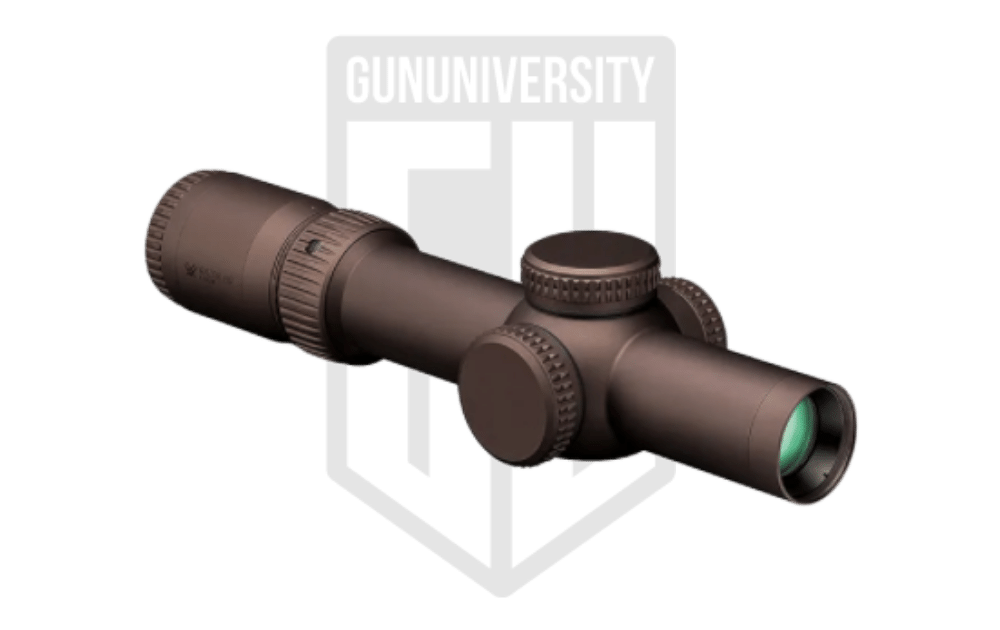
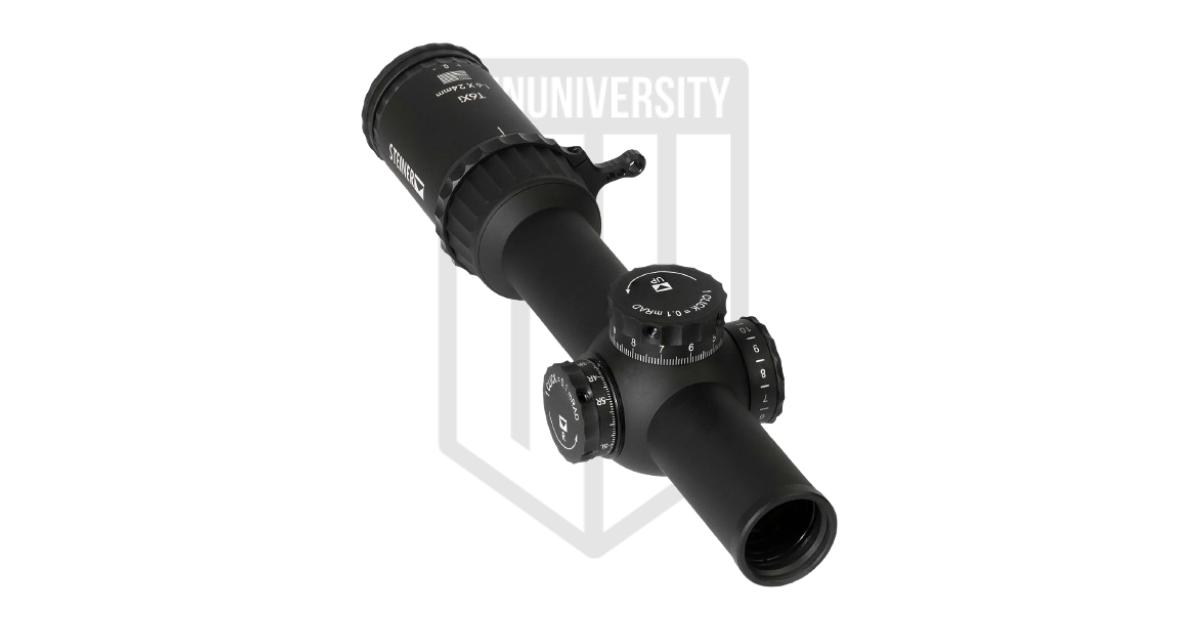

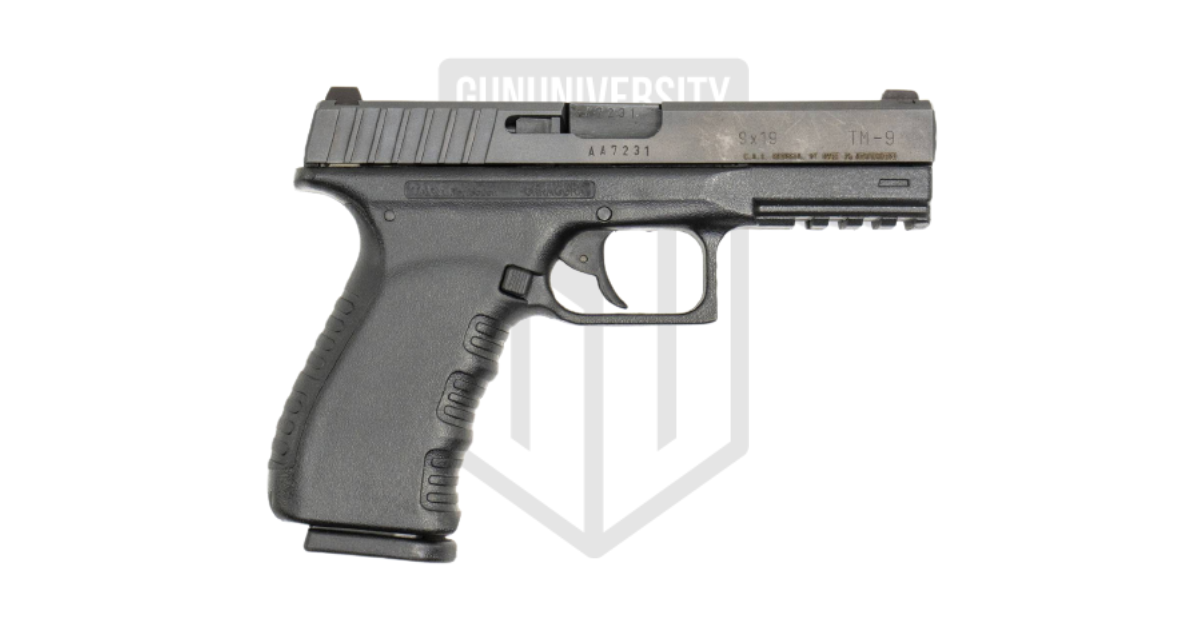
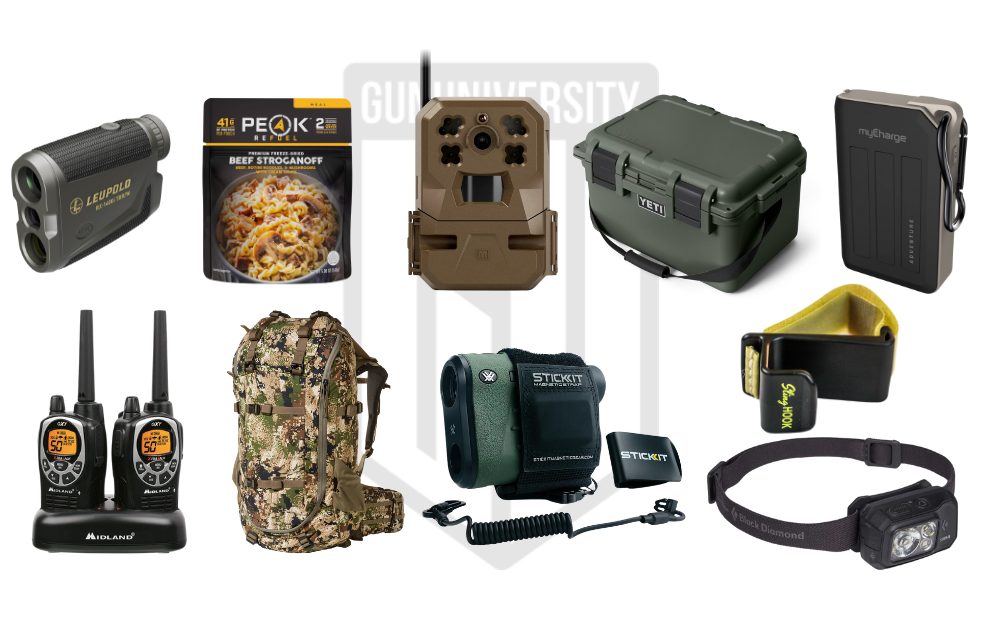
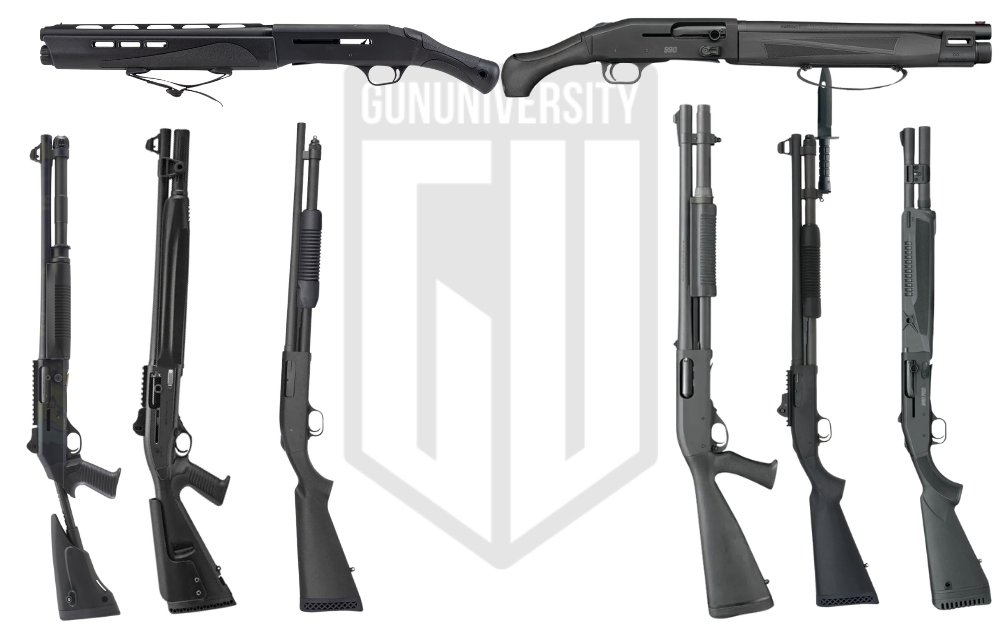
I was looking for a LPVO review. Not one, 1-4X mentioned. If I wanted more than 4X, I could easily have found a better in a traditional scope, like a 2-10X that would beat those hands down.